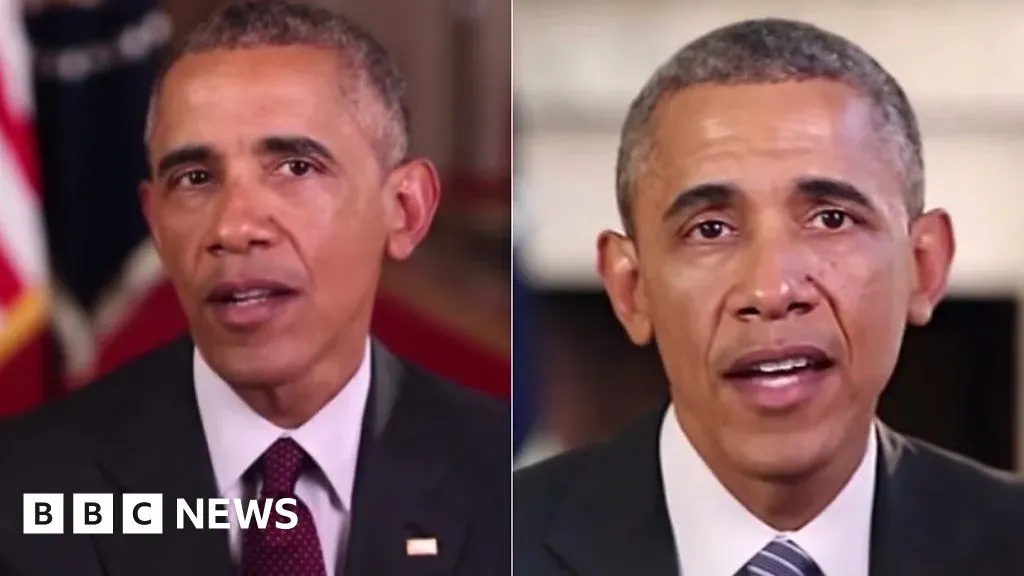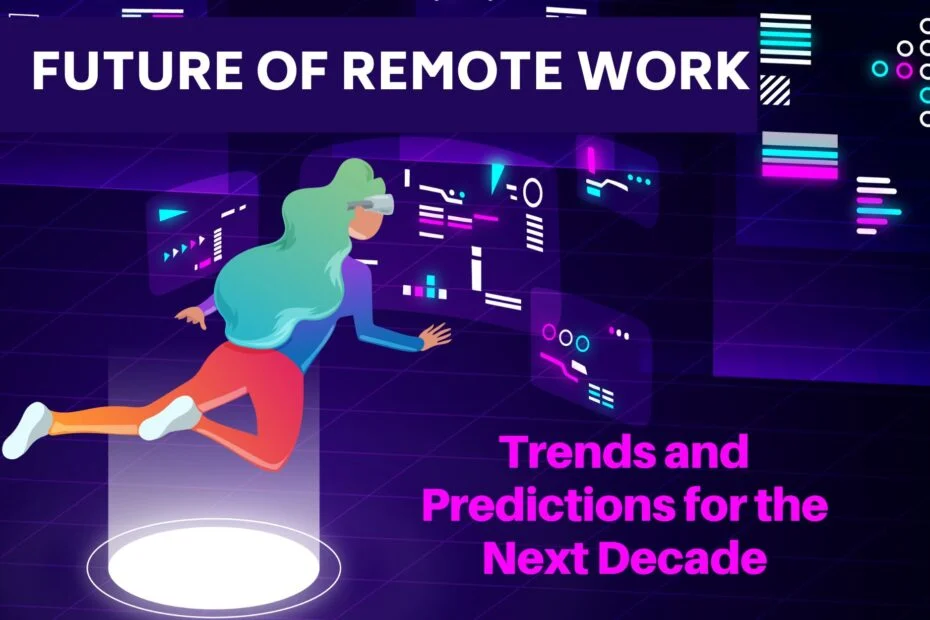In a startling display of political manipulation, Trump’s Fake Video of Obama has resurfaced, capturing attention for all the wrong reasons. In this AI-generated video, former President Obama is depicted being forcibly yanked from his chair, kneeling before a mocking Trump, a scene that raises alarms about deepfake politics and its potential to distort reality. This graphic portrayal not only stirs questions about the misuse of technology but also serves as a harsh reminder of the racism in media that continues to pervade our society. By using such vivid imagery, Trump’s video amplifies harmful narratives, transforming a comedic stunt into a disturbing commentary on race relations in America. As we navigate this new realm of AI-generated videos, we must remain vigilant about the dangers they pose to political discourse and social cohesion.
The recent uproar surrounding Trump’s manipulated video of Obama highlights the troubling implications of AI-created content in our political landscape. Such instances of political theater illustrate how digital fabrications can twist public perceptions and fuel divisive narratives, particularly concerning race. The portrayal of prominent figures in demeaning positions echoes historical tropes of racial subjugation, showcasing an alarming trend in media representation. This phenomenon not only raises ethical questions about authenticity but also signals a form of manipulation that can easily sway public opinion. As our media environment evolves, it is crucial to critically examine how these AI-generated visuals influence our understanding of truth and justice in contemporary politics.
The Alarming Impact of Trump’s Fake Video of Obama
Trump’s fake video of Obama, where the former president is depicted as kneeling before him, is a glaring example of how political manipulation can use racism as a weapon. This AI-generated video starkly transforms a respected figure into a subject of mockery and subjugation, painting a troubling picture of racial dynamics in America. In a society where political discourse often dives deep into sensationalism, such imagery serves to deepen existing racial divides and normalize disrespect towards those in positions of authority, particularly related to racial minorities.
As deepfakes become more sophisticated, they threaten to undermine our understanding of truth, particularly in politics. With the rise of AI-generated content, discerning what is real and what is fabricated becomes increasingly daunting. The consequences of such manipulation are profound; not only do they distort our perception of political figures like Obama, but they also perpetuate narratives that minimize the struggles faced by marginalized communities. These videos are not mere entertainment, but rather tools used to incite outrage and ideological division.
Understanding Deepfake Politics and Its Consequences
Deepfake technology has emerged as a powerful force in shaping political narratives, raising critical concerns around authenticity and trust. Politicians, including Trump, have experienced the ramifications of deepfakes, with fabricated images and videos influencing public opinion and campaign strategies. The use of deepfakes signifies a troubling trend where visual credibility is manipulated, leading audiences to question the validity of any political content they consume.
However, the growing prevalence of deepfakes in political discourse is particularly dangerous, as it enables the propagation of false narratives that can drive social and racial tensions. When Trump’s fake video of Obama circulating widely, it exemplifies how technology can be exploited to further a political agenda, diminishing the integrity of democratic discourse. With every deepfake that goes viral, the collation of misinformation and its impact on public opinion becomes exponentially more challenging to combat.
Racism in Media: A Persistent Issue
The use of deepfakes like that of Obama’s kneeling scene reveals deep-rooted racism that remains prevalent in media today. Historically, the media has often propagated harmful stereotypes and narratives, and AI-generated content magnifies these toxic messages. Trump’s video isn’t merely a satirical jab; it represents a potent symbol reflecting how racially charged narratives can be weaponized for political gain, thereby perpetuating systemic racism.
Furthermore, the representation of Obama in a subservient position speaks volumes about the societal norms and attitudes towards race. Media plays an influential role in shaping perceptions and interactions among diverse communities. By promoting such content, we risk reinforcing the idea that certain individuals or groups can be demeaned or disrespected, undermining progress towards equality and healing past racial wounds. The urgency to challenge these subliminal messages and strive for represents progress in media portrayal of race cannot be overstated.
The Role of Artificial Intelligence in Political Manipulation
Artificial intelligence continues to evolve, pushing the boundaries of what is technically possible in various realms, including politics. While AI can be harnessed for positive applications, its misuse raises concerns about misinformation and manipulation, especially within the political arena. Trump’s fake video exemplifies the dark side of AI, wherein technology is employed to distort reality and further a divisive agenda.
As AI-generated videos proliferate, the implications for democratic engagement are vast. Citizens may find themselves navigating a minefield of deceptive content, creating an environment where genuine dialogue is hindered by fear and distrust. It’s crucial for consumers of media to cultivate digital literacy, enabling them to critically analyze the content they encounter, thus helping counteract the potential for AI to manipulate public perception through politically charged imagery like the video depicting Obama.
Voter Reactions to Deceptive Political Content
The reactions of voters to politically charged deepfake content, such as Trump’s fake video of Obama, are often polarized. Some viewers may find humor in the absurdity of the depiction, while others feel offended and marginalized. This divergence emphasizes the effectiveness of such videos, as they can elicit strong emotional responses and shift public discourse, ultimately impacting how voters engage with political narratives.
Understanding how the public interacts with these deceptive resources is critical for political strategists and media analysts alike. The delineation of voter attitudes towards manipulated imagery can reveal the undercurrents of societal sentiments and how they can be leveraged for electoral purposes. It raises questions about the ethical boundaries in media and politics; if divisive and racially charged content continues to resonate with certain demographics, it may signal deeper issues within society that demand serious introspection.
Political Manipulation: The Use of Fear as a Strategy
Trump’s use of fear-based narratives, exemplified through deepfakes like the one depicting Obama on his knees, is a calculated strategy to assert dominance and rally support from his base. This approach capitalizes on the anxieties surrounding race, immigration, and national identity, driving a wedge between various communities. By visually framing opponents in a derogatory manner, Trump not only aims to undermine their credibility but also fuels his supporters’ fears and biases.
This tactic is not unprecedented in politics; historical patterns reveal that leaders often exploit societal fears to gain power. When the public is bombarded with conflicted imagery that invokes racial stereotypes, it conditions them to accept fear as a normative response. The ramifications of such manipulation on civic engagement are substantial, leading many to either withdraw from the political process or engage in destructive discourse.
The Future of Media Literacy in Politics
As media becomes an increasingly potent tool for political messaging, the need for comprehensive media literacy is paramount. Educating individuals about the nuances of digital content, particularly concerning deepfakes, is essential in fostering critical thinking skills to counteract misinformation. The alarming portrayal of Obama in Trump’s fake video serves as a potent reminder that discerning fact from fiction in political media is crucial for maintaining a well-informed electorate.
Moreover, promoting media literacy can empower individuals to engage thoughtfully with political content, enabling them to challenge harmful narratives and demand accountability from media outlets. As society navigates the complexities of AI and digital manipulation, fostering an environment where voters are equipped to analyze the content critically could drastically affect the role of misinformation in elections. This proactive approach ultimately leads to healthier democratic discourse and reduces the impact of divisive political machinations.
Steps to Combat AI-Aided Political Injustice
Addressing the unsettling implications of AI in political media requires concerted efforts at multiple levels. Firstly, media organizations and policymakers need to regulate the usage of deepfakes, ensuring that audiences are adequately informed about what constitutes manipulated content. Additionally, interdisciplinary collaborations involving technologists, ethicists, and educators can develop robust frameworks to anticipate and mitigate the risks associated with AI misuse in politics.
Secondly, community engagement initiatives can raise awareness about the dangers posed by AI-generated misinformation. By equipping citizens with resources to identify and respond to deepfakes, society can collectively push back against the normalization of racist and divisive content in political discourse. Only by fostering a culture of accountability and informed consumption can we hope to counter the narratives portrayed in troubling videos like Trump’s depiction of Obama.
Reflections on Racial Representation in Political Imagery
The depiction of Obama in an embarrassing and subservient way underscores critical conversations about racial representation in media. As a historic figure, Obama’s image has tremendous power, and the manner in which it is manipulated can perpetuate harmful stereotypes. The need for sensitivity and respect towards racial identities in media representations cannot be overstated. When public figures resort to degrading imagery for political gain, it sends a harmful message that reduces profound societal issues to mere fodder for entertainment.
In reflecting upon the erosion of civil rights through such portrayals, we come to recognize the urgent necessity for change in the narratives shared in media. Encouraging inclusivity and diversity in media representation is essential to combatting the damaging effects of racism and polarization. By amplifying positive and respectful images of Black leaders and communities, we can collectively work towards fostering a more equitable and just society, moving beyond the superficial engagements that replicate cycles of oppression.
Frequently Asked Questions
What does Trump’s fake video of Obama reveal about deepfake politics?
Trump’s fake video of Obama is a stark example of deepfake politics, demonstrating how AI-generated videos can manipulate public perception. This specific video, showing Obama in a compromising position, highlights the potential for deepfake technology to amplify racist narratives and political manipulation, raising significant concerns about its impact on society.
How does the AI-generated video of Trump and Obama relate to racism in media?
The AI-generated video of Trump forcing Obama to kneel is a troubling portrayal that directly feeds into racism in media. By depicting a revered Black figure in a subservient position, it reinforces harmful stereotypes and illustrates how media can perpetuate racial narratives that dehumanize individuals based on their race, thus becoming a tool for political manipulation.
What are the implications of Trump’s fake video of Obama in terms of political manipulation?
Trump’s fake video of Obama serves as a potent example of political manipulation through media. By using an AI-generated deepfake, it amplifies misinformation and racial stereotypes, strategically aimed at swaying public opinion and creating a divisive political climate. This manipulation underscores the dangers that such technology poses to democracy and civil discourse.
Why is Trump’s fake video of Obama considered an effective tool for racism in politics?
The portrayal of Obama on his knees in Trump’s fake video is considered an effective tool for racism in politics because it exploits racial dynamics to provoke emotional reactions. By depicting a former president, particularly a Black one, in a submissive role, it aims to incite division and reinforce hierarchies based on race, reflecting a strategy rooted in historical racism for political gain.
How does Trump’s use of AI-generated videos impact public perception of reality?
Trump’s use of AI-generated videos, like the one involving Obama, significantly impacts public perception of reality by blurring the lines between truth and fiction. As such deepfakes become more sophisticated, they can mislead viewers into accepting false narratives as authentic, raising concerns about misinformation and the erosion of trust in media.
What are the risks associated with the rise of deepfake videos in politics?
The rise of deepfake videos in politics, exemplified by Trump’s fake video of Obama, poses several risks including the spread of misinformation, erosion of public trust, and reinforcement of racial and political stereotypes. These manipulative tools can be weaponized to influence voter behavior, incite violence, and undermine democratic processes.
In what ways does Trump’s fake video of Obama connect to broader issues of civil rights?
Trump’s fake video of Obama connects to broader issues of civil rights by normalizing the mockery of marginalized communities and perpetuating narratives that diminish their experiences. This type of political content can desensitize the public to real instances of civil rights violations, obscuring the gravity of systemic issues faced by Black and other minority groups.
| Key Points | Explanation |
|---|---|
| Outright Racism | The video depicts Obama being forced to kneel before Trump, symbolizing historical racial submission and evoking fears of normalized racism in society. |
| Manipulation of Reality | AI-generated videos like this blur the line between reality and fiction, raising concerns about the public’s ability to discern truth in political narratives. |
| Political Weaponization | Trump’s use of such videos exploits racial and political tensions, reinforcing dangerous narratives about marginalized groups, thus affecting public perception. |
Summary
Trump’s Fake Video of Obama raises alarming concerns about the intersection of race, reality, and political weaponization. The video not only amplifies racist tropes but also showcases how deepfake technology can significantly alter public perception about political figures and their narratives. In a time where misinformation is rampant, the public must remain vigilant and critical of content shared online, recognizing that videos like Trump’s can serve as divisive tools that manipulate societal fears and reinforce harmful stereotypes.



